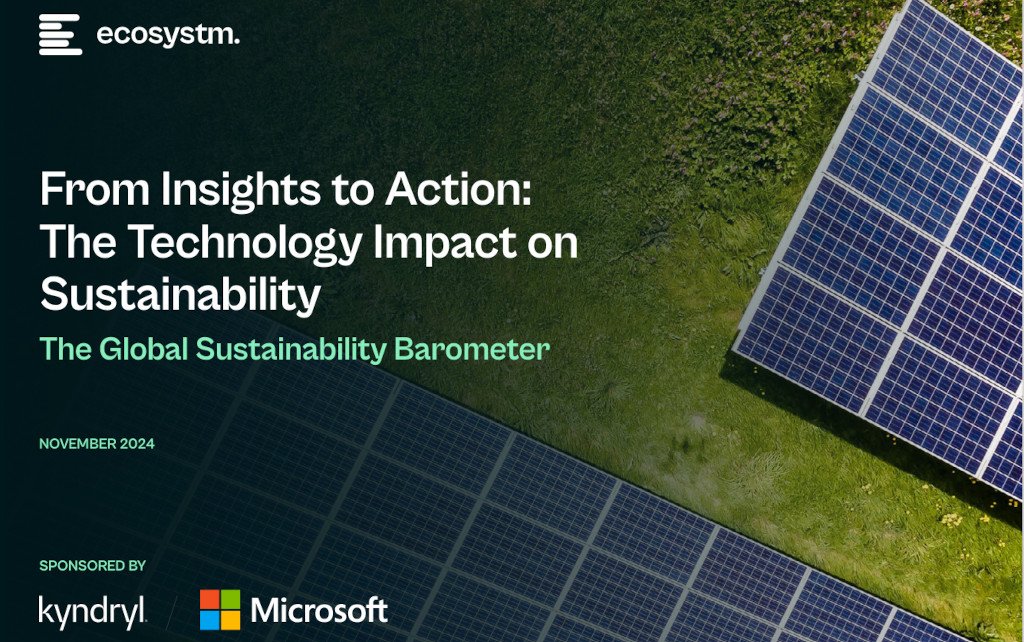A recent report from the Kyndryl-Microsoft Global Sustainability Barometer highlights a crucial shift in how Indian organizations are using technology to meet sustainability targets. According to the Kyndryl-Microsoft study, 54% of businesses in India are already employing technology in their sustainability efforts, and 31% have even expanded their goals over the past year.
While this is a step in the right direction, there are still significant gaps. For instance, as per the Kyndryl-Microsoft study, only 13% of businesses are effectively integrating data into their sustainability strategies, and just 28% are leveraging AI for predictive planning. These findings are not just relevant to sectors like IT and manufacturing—they are just as critical for agritech, a sector that is central to India’s economy and environmental future.
Agritech: The Sustainability Imperative
Agriculture plays a pivotal role in India’s economy, contributing around 18% to the GDP and providing livelihoods to more than half the population. Yet, the sector is under growing pressure. Issues like depleting soil health, increasing water scarcity, and the intensifying impact of climate change demand urgent attention. Without widespread adoption of agritech solutions, India’s sustainability goals will remain out of reach.
Consider the environmental costs of traditional farming practices: methane emissions from livestock, nitrous oxide from fertilizers, and the rampant burning of crop stubble, which severely impacts air quality in northern India. These practices highlight why agritech is not just an option but a necessity for reducing agriculture’s environmental footprint and building resilience against climate change.
Linking Agritech and Climate Goals
The link between agriculture and climate change is undeniable. Farming practices not only contribute to emissions but are also deeply affected by changing weather patterns. The outcomes of COP29 underscore the urgency for India to prioritize agritech as part of its climate strategy. While the summit pledged to triple global climate finance to $300 billion annually, India has expressed its disappointment, citing the developed nations’ failure to meet their commitments. This lack of financial and technological support extends to agriculture, a sector that desperately needs innovation but often struggles to secure adequate funding and policy support.
Agritech offers tangible solutions: precision farming to optimize inputs, drones for real-time crop monitoring, and AI-powered weather forecasting to mitigate risks. However, the Kyndryl-Microsoft study also revealed a broader challenge—organizations are not fully utilizing data and AI. For agriculture, this translates to missed opportunities to enhance resource efficiency, predict climate impacts, and reduce dependence on unsustainable practices.
The Role of Policy and Investment
To unlock agritech’s potential, India must address its policy and investment gaps. While initiatives like the ‘AgriSure Fund’ and the Namo Drone Didi scheme are a start, they fall short of the scale required to transform the sector. The government needs to craft supportive policies that encourage innovation, promote private investment, and foster public-private partnerships. These measures could enable agritech companies to scale their solutions, making sustainable farming practices more accessible to millions of farmers.
Collaboration is equally critical. Building a system where farmers, agritech developers, environmental scientists, and policymakers work together can ensure that technological solutions address real-world challenges and align with national sustainability priorities.
Lessons from the Kyndryl-Microsoft Study for Agritech
The insights from the Kyndryl-Microsoft study provide valuable lessons for the agritech sector:
- Data Integration: Just as only 13% of Indian businesses are effectively using data, agritech must focus on combining diverse data sources—like soil health metrics, weather data, and market trends—to drive smarter decision-making.
- AI for Predictive Analysis: Advanced AI tools can help farmers prepare for climate risks, optimize resource use, and avoid environmentally harmful practices. Yet, this potential remains underutilized.
- Collaboration Across Sectors: The Kyndryl-Microsoft study emphasizes engaging cross-functional teams, a principle that applies to agriculture. Farmers, agritech firms, environmental experts, and financial institutions all have a role in driving sustainable change.
However, beyond the availability of internet access and smartphones, the challenges in agritech adoption are substantial. First, encouraging farmers to adopt these technologies involves overcoming a steep learning curve, especially for those less familiar with digital tools. Additionally, transitioning to subscription-based models presents another hurdle, as many farmers may find it difficult to invest in recurring payments.

This is where the government needs to step in to make agritech accessible and inclusive. This could involve setting up platforms similar to OpenStack, which offers open-source solutions to standardize technology infrastructure, or ONDC, designed to democratize e-commerce by connecting buyers and sellers directly. Adapting such frameworks for agritech could help farmers access tools and services seamlessly. Another approach could be subsidizing free or low-cost subscriptions, possibly funded through advertisements from service providers. Without addressing these barriers, the reach of agritech might remain limited, benefiting only a small fraction of farmers.
Sustainability Goals Beyond COP29
As India navigates the challenges of global climate negotiations, agritech represents a powerful tool for balancing economic growth with environmental sustainability. By aligning with the principles outlined in the Kyndryl-Microsoft study, the sector can help India build a more resilient and sustainable agricultural landscape.
The message is clear: technology must become the backbone of India’s agricultural transformation. Whether it’s tackling stubble burning, cutting methane emissions, or improving water efficiency, agritech has the solutions. But realizing this potential requires decisive policy action, increased investment, and a shared commitment to innovation. Without these steps, we risk missing a crucial opportunity—not just for Indian agriculture but for the planet’s future.


